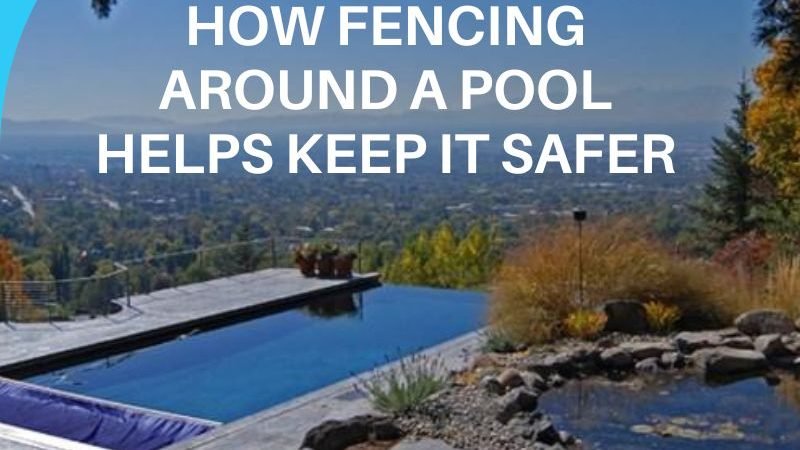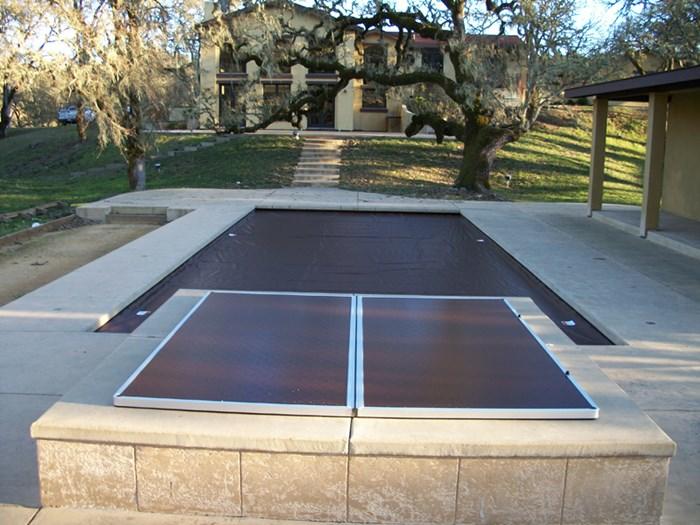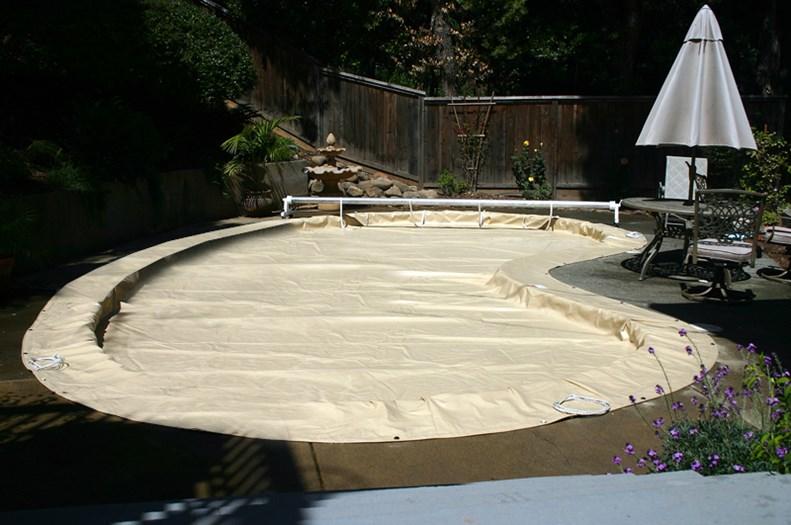
Pool safety is critical for preventing accidents and ensuring a safe environment for everyone, especially children, around swimming pools. It is essential for protecting lives and preventing injuries. It requires a combination of physical measures, supervision, education, and emergency preparedness to create a safe and enjoyable environment for everyone.
Fencing around pool areas is a crucial safety measure designed to prevent accidental drownings and injuries, particularly in homes with young children and pets. This preventive strategy is supported by numerous safety organizations worldwide and is often mandated by local laws and regulations to ensure that pool owners adhere to specific safety standards.
Choosing the correct type of fencing involves considering factors such as budget, aesthetics, maintenance, and the specific safety requirements of the pool area. Pool owners consult with professionals and comply with local regulations when installing pool fencing to ensure it effectively provides a safe and secure environment.
Legal requirements and standards
Overview of legal requirements for pool fencing in various US regions
In the United States, legal requirements for pool fencing vary significantly from one state to another and often even at local city or county levels. Here are examples of pool fencing requirements in a few U.S. states:
California
- Pool fences must be at least 60 inches tall.
- The fence cannot have gaps or openings larger than 4 inches in diameter.
- If the fence is made of vertical and horizontal members, the rules about the gap size and the members’ orientation depend on their distances apart.
- Self-closing and self-latching gates are required, with the latch placed high enough to be out of reach of small children.
Florida
- Pool barriers must be at least 48 inches high.
- The barrier must not have gaps, openings, or indentations larger than 4 inches.
- The pool must be equipped with an approved safety pool cover.
- Doors and windows providing direct access from the home to the pool must be equipped with an exit alarm.
Texas
- While Texas does not have a statewide pool fence law, many localities adopt codes that mirror the International Residential Code or other standards, typically requiring fences to be at least 48 inches tall.
- Gates must be self-closing and self-latching.
- The space between the ground and the bottom of the fence must not exceed 4 inches.
Discussion of international safety standards for pool barriers and gates
These standards vary by country but share common goals: to restrict unsupervised access to pools, reduce drowning risks, and enhance overall safety. Key elements typically addressed in these standards include:
Height and strength
- Height – Pool barriers and gates should be certain to prevent children from climbing over them. This height is often 1.2 meters (4 feet) or higher.
- Strength – Materials used for barriers and gates must be durable enough to withstand attempts to break through or dismantle them.
Gaps and openings
- Gaps – The standards specify the maximum size of gaps in the barrier to prevent children from squeezing through. It is commonly set at a size that does not allow a 100mm (4-inch) diameter sphere to pass through.
- Climbability – Features that make a barrier easily climbable, such as horizontal bars that can serve as footholds, are discouraged or regulated to prevent children from climbing over.
Gate features
- Self-closing and self-latching – Gates must be self-closing and self-latching, with latches placed high enough to be out of reach of young children. It ensures the gate is closed and secured.
- The direction of swing – In many standards, pool gates must open outwards, away from the pool area, to prevent them from being easily pushed open by small children leaning against them.
Maintenance and inspection
- Regular maintenance and inspection are recommended to ensure that barriers and gates remain in good working condition and continue to meet safety standards.
International standards and guidelines
Several international organizations and countries have developed their standards and guidelines for pool safety, including:
- Australia: AS1926.1-2012 Swimming Pool Safety – Safety Barriers for Swimming Pools
- United States: The Consumer Product Safety Commission (CPSC) publishes pool and spa safety guidelines, including barrier and gate requirements.
- Europe: European countries may follow EN standards related to swimming pool safety, although specific regulations can vary by country.
- ISO: The International Organization for Standardization (ISO) may have relevant standards that impact pool safety on a broader scale. However, specific standards for pool barriers and gates are generally set at the national or regional level.
Preventing accidents
Statistics on pool-related accidents and the role of fencing in preventing such incidents
On average, approximately 379 children under age 15 in the United States die each year from drownings linked to pools or spas, with most of these incidents occurring in residential pools. Children ages 1–4 are the most affected, highlighting the crucial need for proper supervision and preventive measures around swimming pools.
Fencing’s role in preventing pool-related incidents cannot be overstated. Installing four-sided isolation fences with self-closing and self-latching gates around backyard swimming pools can significantly reduce the risk of accidental drownings among children.
Furthermore, drowning prevention and water safety education are keys to reducing these tragic incidents. Ensuring everyone knows the basics of swimming and cardiopulmonary resuscitation (CPR) can save lives. For children aged 1 to 4, formal swim lessons can reduce the risk of drowning by 88%.
While no one is drown-proof, and drownings can occur quickly and silently, most incidents are preventable with knowledge and preventive measures. Education on water safety, the installation of appropriate fencing around pools, and supervision are crucial steps in preventing these tragedies.
How does fencing serve as a physical barrier to restrict unsupervised access by children and pets?
Fencing is an effective physical barrier restricting unsupervised access by children and pets, providing safety and security in various settings, such as homes, schools, and public playgrounds. Here are the following ways fencing achieves this:
- It prevents accidents
- It defines boundaries
- It offers containment
- It protects from external threats
- It enables supervised access
- It is customizable for specific needs
- It provides peace of mind
Design and material considerations

Exploration of different materials used for pool fencing (e.g., glass, aluminum, wood) and their safety features.
Glass pool fencing
- Aesthetics – Glass fencing offers a modern and elegant look. It also provides an unobstructed view of the pool area, making it a popular choice for those who want to blend safety with aesthetics.
- Safety features – Glass pool fences are made from tempered glass, much stronger than standard glass.
- Durability – Tempered glass is resistant to weather and UV rays, making it a durable option for pool fencing. However, it requires regular cleaning to maintain its clear appearance.
Aluminum pool fencing
- Aesthetics – Aluminum fencing offers a sleek, versatile look that can fit various landscaping and architectural styles. It comes in multiple designs and colors, allowing for customization.
- Safety features – Aluminum fences are durable, providing a secure barrier around the pool. They also resist climbing, as the smooth surface and lack of horizontal bars reduce footholds.
- Durability – Aluminum is lightweight yet robust, resistant to corrosion, and requires minimal maintenance.
Wood pool fencing
- Aesthetics – Wood fencing offers a classic, natural look that can complement any outdoor space. It provides the opportunity for privacy, depending on the design and height of the fence.
- Safety features – Wooden fences can be built to various heights, making them difficult for children and pets to climb. However, the design must be considered carefully to avoid creating potential footholds or gaps that could compromise safety.
- Durability – The durability of wood fencing depends on the type of wood used and its maintenance. Wood is susceptible to weathering, rot, and insect damage, requiring regular treatment and maintenance to prolong its life.
The importance of fence height, gap size, and self-closing, self-latching gates enhancing safety
These features are crucial in preventing accidents and ensuring a safe environment for everyone, particularly children and pets.
Fence height:
- For pools, most safety guidelines and regulations recommend a minimum fence height of 4 feet (1.22 meters), with some areas requiring higher fences, such as 5 feet (1.52 meters) or more. The goal is to prevent children from being able to climb over the fence and access the pool unsupervised, which significantly reduces the risk of drowning accidents.
Gap size:
- Regulations typically specify that gaps should not exceed 4 inches (10 cm) to prevent children from squeezing through or pets from escaping. This tight spacing is essential to ensure that the barrier is effective for children of all sizes and does not provide easy footholds for climbing.
Self-closing and self-latching gates:
- A self-closing gate ensures that it will automatically close after it has been opened, which is vital for preventing unsupervised access to the pool area. The self-latching mechanism ensures the gate is securely fastened upon closing, requiring adult intervention to reopen. This feature is crucial to prevent young children from wandering in hazardous areas.
Privacy and aesthetics
How fencing can provide privacy to pool users
Fencing around a pool area can significantly enhance privacy for pool users in several ways:
- It provides a visual barrier.
- It allows design flexibility.
- It provides a sound barrier.
- It enhances security.
- It defines boundaries.
- It complies with regulations.
The balance between safety features and aesthetic appeal in fencing design
Safety features
Safety is a paramount concern in fencing design, especially in contexts where the fence’s primary purpose is to protect, secure, and provide privacy. Key considerations include:
- Height and opacity – Fences intended for security purposes are often taller and less transparent to prevent unauthorized access and maintain privacy.
- Materials and durability – The choice of materials is critical for ensuring the fence can withstand environmental pressures and potential breaches.
- Structural integrity – The design must ensure the fence’s stability and resilience against physical stress and attempts at climbing or cutting through, which can dictate structural choices that might not always align with aesthetic preferences.
Aesthetic appeal
The aesthetic aspect of fencing design focuses on how the fence complements its surroundings and meets the community owner’s stylistic preferences. It can include:
- Design and style – Fences can be designed with various patterns, colors, and finishes to match architectural styles or landscape designs.
- Integration with environment – Fences should ideally blend with or enhance their environment. It can involve using natural materials or colors that fit the local landscape, designing the fence to follow natural contours, or incorporating greenery and landscaping elements.
- Innovative materials – Modern materials and finishes can help achieve aesthetic and safety goals.
Maintenance and durability

Tips on maintaining pool fences to ensure long-term durability and safety
Maintaining pool fences is crucial to ensure their long-term durability and safety. Here are some tips to help you keep your pool fences in good condition:
- Look for rust, loose or missing fasteners, post cracks, or other issues compromising the fence’s integrity. Do this at least twice a year or after severe weather conditions.
- Keep your pool fence clean by washing it with a mild detergent and water.
- If your pool fence is made of metal and shows signs of rust, address it immediately. Use a wire brush to remove rust and apply a rust-inhibiting primer followed by a fresh coat of paint. Consider applying a silicone-based spray that repels water and prevents rust.
- Check all the hardware on your fence, including screws, bolts, and hinges, to ensure they are tight and in good condition. Loose hardware can make your fence unstable, while rusty or damaged hardware can fail, posing a safety risk. Replace any compromised hardware immediately.
- Ensure the fence’s gate closes and latches properly every time. If you have a self-closing and self-latching gate, regularly check these mechanisms to ensure they function correctly. Adjust the tension and replace parts as necessary.
- Overgrown vegetation can pressure your pool fence, causing it to lean, warp, or even break. Regularly trim plants and bushes near the fence to prevent such damage.
- Besides doing periodic inspections, consider having a professional inspect your pool fence every few years. They can identify potential problems you might miss and suggest repairs or upgrades to ensure the fence remains safe and compliant with local regulations.
- Ensure your pool fence meets local safety codes and regulations. These can vary significantly from one place to another, so be aware of and comply with the requirements specific to your area.
- If you notice any damage or issues during your inspections, address them immediately. The longer you wait, the more you compromise the safety of the pool area and potentially face higher repair costs.
The impact of weather and wear on different fencing materials and how to address these challenges
Wood fencing
- Impact of weather and wear – Wood is susceptible to rot, mold, and mildew, especially in damp climates. It can also warp, crack, or split under extreme temperature changes. Sun exposure can lead to fading and deterioration over time.
- How to address – Use pressure-treated wood for increased resistance to rot and insects. Regularly apply waterproof sealant to protect against moisture and UV-resistant finishes to combat sun damage. Inspect and repair damaged sections promptly to prevent further deterioration.
Vinyl fencing
- Impact of weather and wear – Vinyl fencing is relatively weather-resistant but can become brittle and crack in cold temperatures. It is also prone to fading and discoloration due to prolonged sun exposure.
- How to address – Choose high-quality, UV-resistant vinyl to minimize fading and deterioration. Clean the fence regularly with soap and water to maintain its appearance. For colder climates, selecting vinyl products that withstand low temperatures is beneficial.
Metal fencing (aluminum and steel)
- Impact of weather and wear – Metal fences are durable but can corrode or rust when exposed to moisture, especially in coastal areas with salty air. Scratches and chips in the paint or protective coating can exacerbate this issue.
- How to address – Opt for aluminum fencing in coastal areas since it does not rust. For steel fences, ensure they are galvanized or coated with a rust-inhibitor. Regularly inspect and touch up any damaged paint or coating to prevent rust. Apply anti-rust treatments as needed.
Technology integration
Pool alarms
- Surface wave detection monitors the water’s surface for disturbances, activating when waves indicate that something has entered the pool. They are useful for detecting when small children or pets fall into the water.
- Subsurface disturbance detection systems detect movements beneath the water’s surface, offering a less false-alarm-prone alternative to surface wave detection. They can differentiate between wind-generated waves and the entry of a person or large object into the water.
- Wristband alarms trigger when they come into contact with water, alerting adults immediately if the wearer falls into the pool. They are suitable for swimmers and non-swimmers.
Perimeter and gate sensors
- Gate alarms sound when the gate is opened without authorization. They can be programmed to require a code or key to deactivate, ensuring that only authorized individuals can access the pool area without setting off the alarm.
- Perimeter sensors create an invisible barrier around the pool area. When the barrier is breached, the alarm sounds. Perimeter sensors can be adjusted to detect motion at various heights, preventing children from crawling under or climbing over fences unnoticed.
Pool covers
- Automatic pool covers can support the weight of children and pets, preventing them from falling into the water when the pool is not in use. They can be activated at the push of a button, making it easy to secure the pool when unsupervised.
Cameras and surveillance
- CCTV and live feed camera systems can be accessed remotely via smartphones or computers, allowing constant surveillance. Installation of these cameras around the pool area enables real-time monitoring. Some cameras incorporate artificial intelligence to detect unusual activity or potential drowning incidents, sending instant alerts to the homeowner or emergency services.
Integration with smart home systems
- Smart home connectivity can integrate with pool safety devices, allowing centralized control and monitoring. They include receiving alerts on smartphones or other devices, automatic activation of alarms and covers based on predetermined schedules, and remote access to cameras and sensors.
Emergency response features
- Some advanced systems can automatically alert emergency services if a potential drowning incident is detected, significantly reducing response times and increasing the chances of a successful rescue.
Conclusion
Fencing plays a crucial role in pool safety by providing a barrier that helps prevent unauthorized access to the pool area, particularly for children and pets. Fencing prevents unauthorized access, provides security for children and pets, complies with regulations, enhances security, and provides privacy.
Proper fence height, limited gap size, and the inclusion of self-closing and self-latching gates are fundamental to creating a safe environment around hazardous areas. These measures prevent unauthorized access and protect vulnerable individuals, such as children and pets, from potential dangers.
The key to successful fencing design lies in understanding the project’s specific requirements and constraints and creatively integrating safety and aesthetic considerations into a cohesive and functional design.
Integrating the latest technologies into pool safety strategies, such as combining physical barriers like fencing with advanced alarms, represents a significant advancement in preventing accidental drownings and unauthorized pool access.
Call to action
Owning a pool comes with great responsibility. It’s crucial to ensure the safety of your loved ones and those around you. Assessing and upgrading your pool fencing is a proactive step towards preventing accidents and providing a secure environment. Don’t wait for a mishap to occur; invest in the safety of your pool area today. Protect what matters most.
Pool Covers, Inc. has provided pool and spa cover advice, services, and sales to customers in Northern California for over 40 years. If you have other ideas and concerns about pool safety or want to inquire about our services, contact us at Pool Covers, Inc. Call us at 707-864-6674 or message us at customerservice@poolcoversinc.com.









